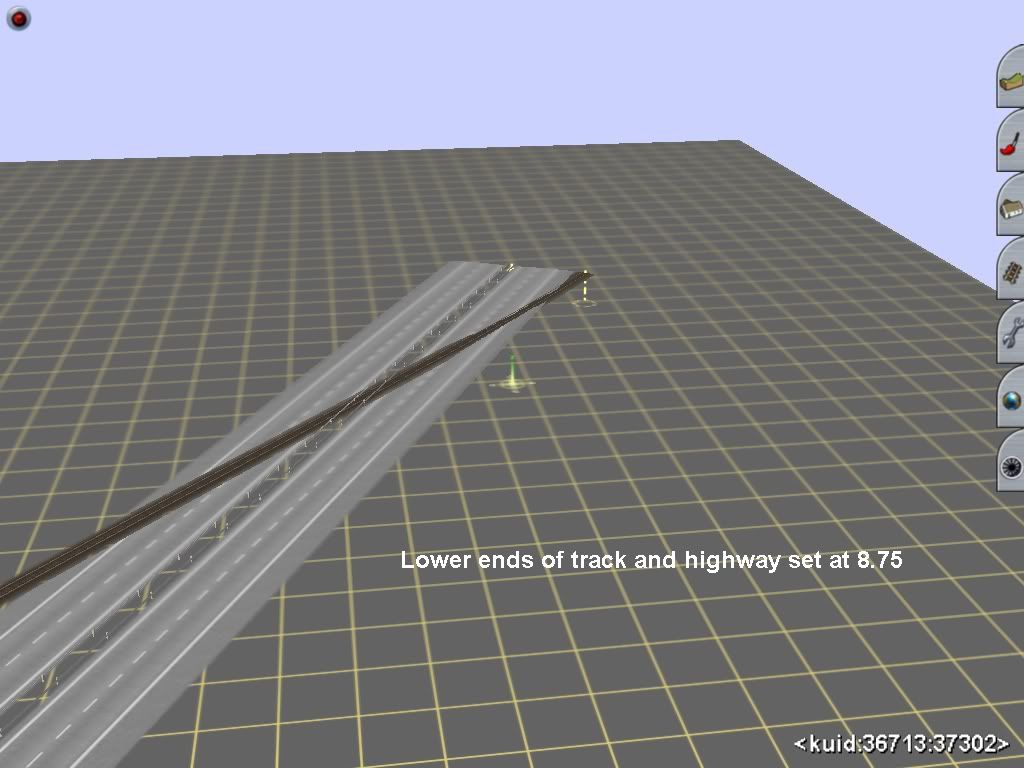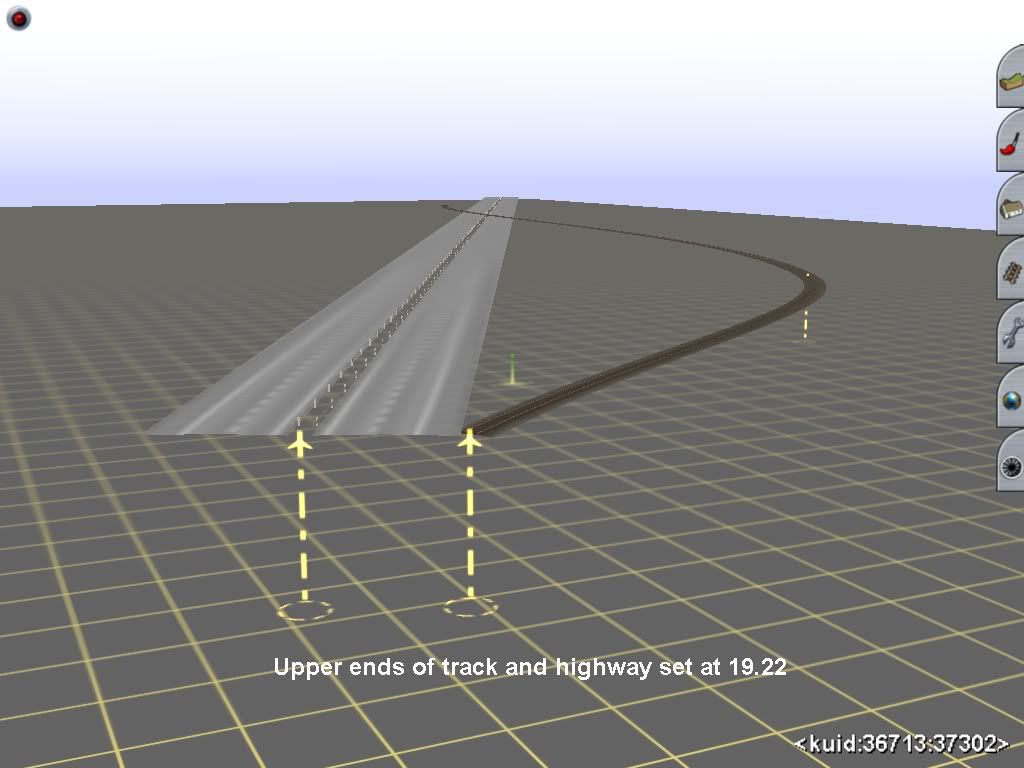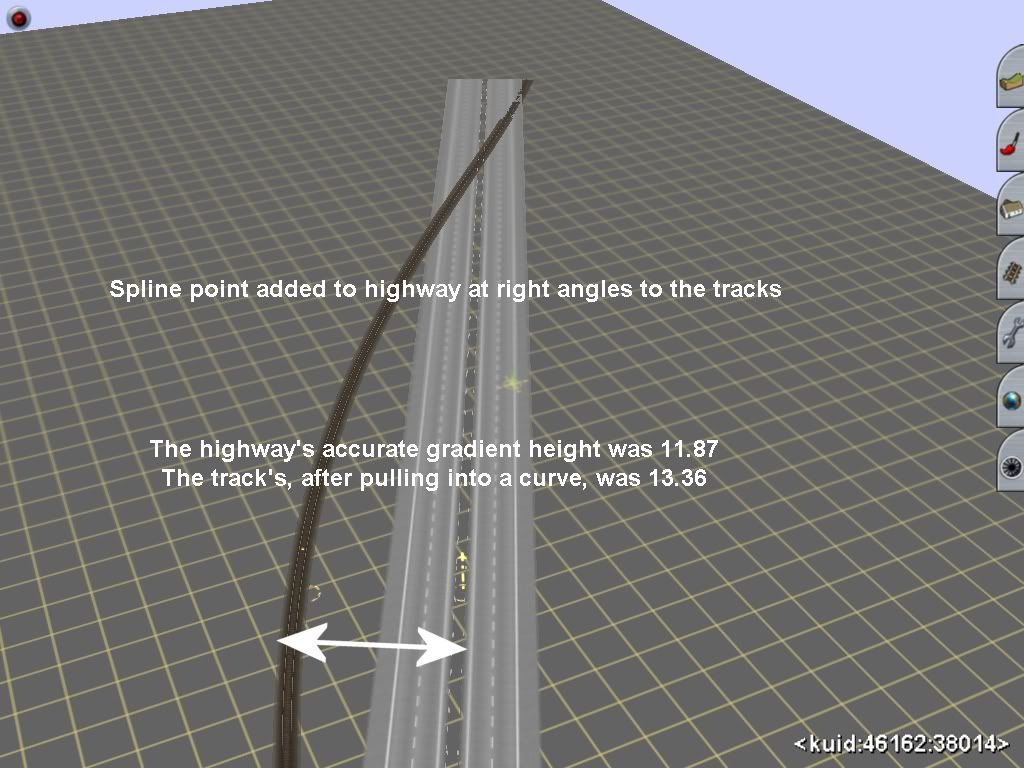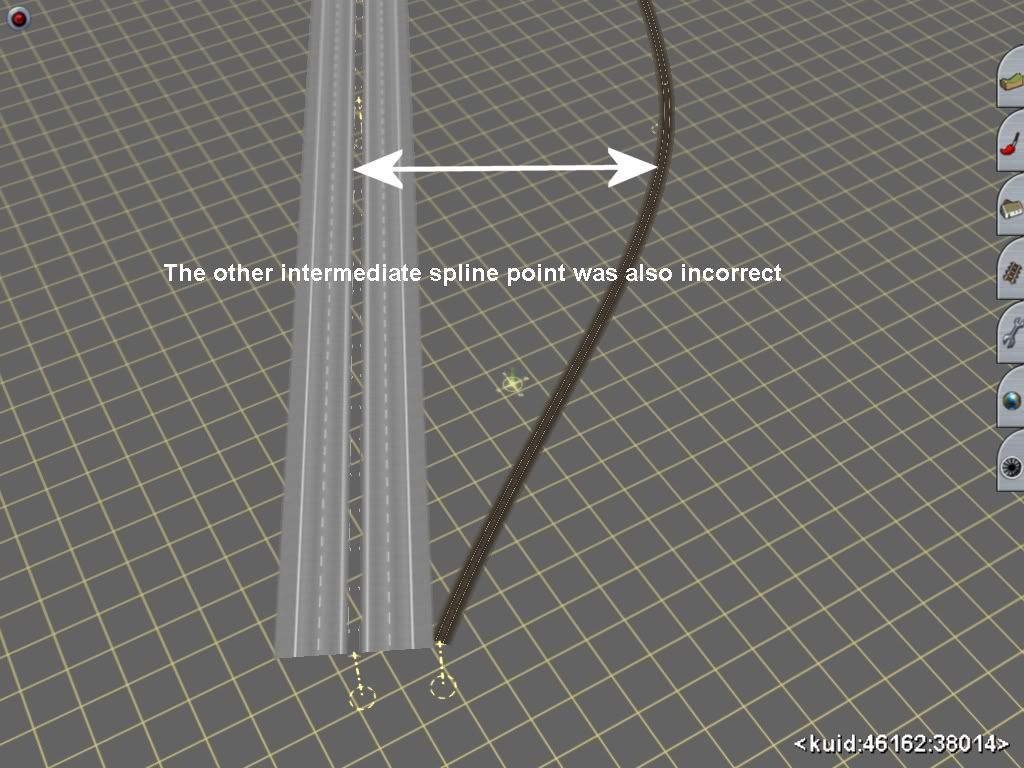mezzoprezzo
Content appreciator
~snip~ my comments were directed to the claim that this method would "set an exact grade over multiple curve section of track". It won't.
It will define a high point and a low point, but the % grade between each spline point will vary...
Andy
Hi Andy,
Yes, you are quite right. The OPs statement is clearly flawed. It’s mathematically impossible as soon as the section of track is increased by “stretching”!
In fact, you can actually measure it, and clearly see the difference, if you use the ‘get gradient’ tool at the start/finish point of each spline point of the stretched out curves as in (3). Not one of the splines match - all of the inclines/descents have different numeric values.
It’s an interesting discussion though. I’ve not really thought about it before.
Cheers
Casper





